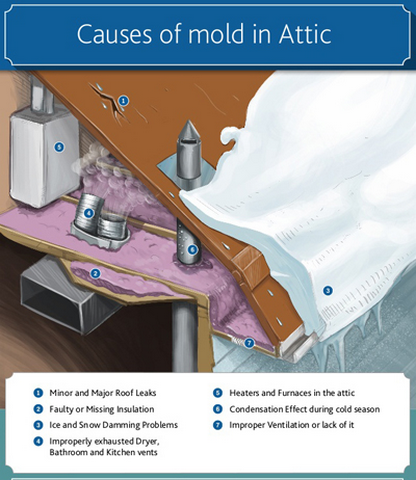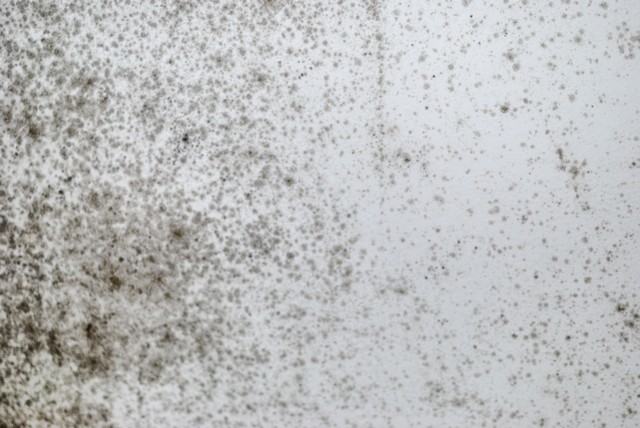
by Eric Brown | Aug 31, 2017 | 37 Symptoms Associated With Mold Illness, Attic Mold, Basement Mold, Beware Of Mold When Buying A Home, black mold removal Atlanta, black mold removal Georgia, Can Black Mold Poison You?, Can Mold Kill?, Commercial Mold Remediation, Commercial Mold Removal, Crawlspace Mold, Dead Mold Spores, Health, Indoor Air Quality, Killing Mold, Mold Facts, Mold Information, Mold Inspection, Mold Remediation, Mold Removal, Questions and Answers, Stachybotrys Black Mold, Toxic Mold
What Is Stachybotrys?
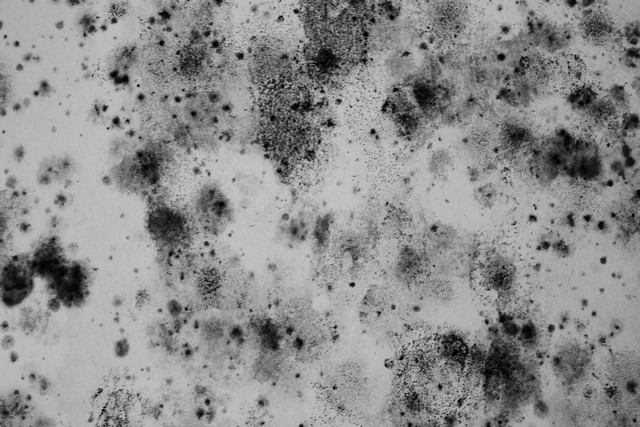
What Is Stachybotrys?
Stachybotrys molds decay organic matter. The most common species, Stachybotrys chartarum, sometimes referred to as Stachybotrys atra often grows indoors.
Ideal conditions for Stachybotrys growth include moisture, a nutrient/food source, temperature, and time. Ideal humidity for this black mold is a relative humidity of 90% or higher for it to begin the germination growth process. Stachybotrys feeds on materials with a high cellulose content such as hay, straw, wood chips, and building materials such as ceiling tile, drywall, paper vapor barriers, wallpaper, insulation backing, cardboard boxes, and paper files.
Stachybotrys Is The King Of Molds!
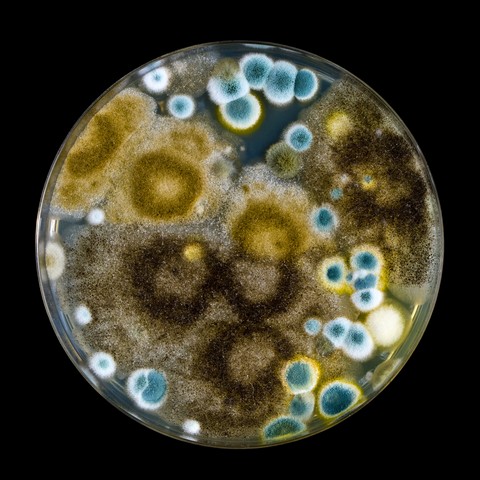
Stachybotrys Is The King Of Molds!
Stachybotrys is considered the King of Molds because it will develop into the dominant mold group if the conditions are favorable and will crowd out the other molds that began feeding on the material first.
This happens because unlike other molds like Aspergillus, Penicillium, and Cladosporium which begin growing within one to two days, Stachybotrys takes one to two weeks to begin growing.
How Does Black Stachybotrys Mold Spread?

How Does Black Stachybotrys Mold Spread?
When Stachybotrys mold is growing on wet material, the spores do not disperse as easily because the spores are held together by a sticky/slimy coating. However, when the material dries out or is disturbed, the spores will spread through the air.
The main concern of a mold remediation contractor is to prevent the spread of toxic black mold. The most effective method of doing this is through containment, which is the process of creating a poly barrier around the area where the Stachybotrys mold is growing.
This procedure is so important because Stachybotrys spreads by releasing spores. Mold contaminated materials must be removed and disposed of because this mold does not just grow on the surface of the material; it has root-like tendrils called mycelia, meaning it is able to penetrate the surface.
Typically Stachybotry mold grows in clusters at the end of stem-like structures known as hyphae.
Top 15 Health Problems Caused By Stachybotrys Black Mold!

Top 15 Health Problems Caused By Stachybotrys Black Mold!
Stachybotrys produces a mycotoxin (i.e., poison from a fungus) named trichothecenes.
Stachybotrys black mold is a health concern because animal studies have shown that one of the major effects of trichothecenes is immuno-suppression.
In fact, even low level exposure can suppress the immune system resulting in bacterial and viral infections, coughing, skin irritation, and other allergic reactions, and there is some speculation that it may even cause cancer.
Listed below are the top 15 health conditions caused when toxic Stachybotrys black mold is inhaled or ingested:
- Sore/hoarse throat
- Cold and flu symptoms (headaches, slight fever, and muscle aches)
- Nosebleeds
- Tingling or burning of nose, mouth, and perspiration areas (under the arms or between the legs)
- Chronic fatigue
- Dizziness
- Nausea/vomiting
- Memory loss
- Attention deficit/concentration problems
- Personality changes such as irritability or depression
- Neurological disorders such as tremors
- Hair loss
- Coughing with blood
- Bleeding in the lungs (hemosiderosis)
- Damage to internal organs including blood, liver, kidneys, and lungs
Got Black Mold Questions?

Got Black Mold Questions?
If you are concerned that you may have black mold in your home or business that requires removal, call Mold B Gone, 678-697-6267 or send us an e-mail.
Top 10 Warning Signs of Black Mold Exposure!
The infographic below, courtesy of the Mold Blogger, provides an excellent summary on black mold and the health symptoms of exposure.

Top 10 Warning Signs of Black Mold Exposure!
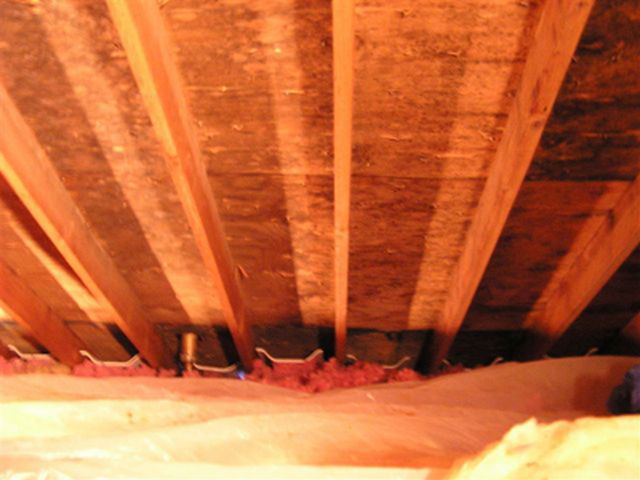
by Eric Brown | May 18, 2017 | Attic Mold, Basement Mold, Bleach and Mold, Crawl Space Vapor Barrier, Crawlspace Mold, Dead Mold Spores, Health, How Toxic Is Mold?, Indoor Air Quality, Killing Mold, Mold Facts, Mold Information, Mold Inspection, Mold Remediation, Mold Removal, Questions and Answers, Toxic Mold
Why Does Mold Grow In My Attic?
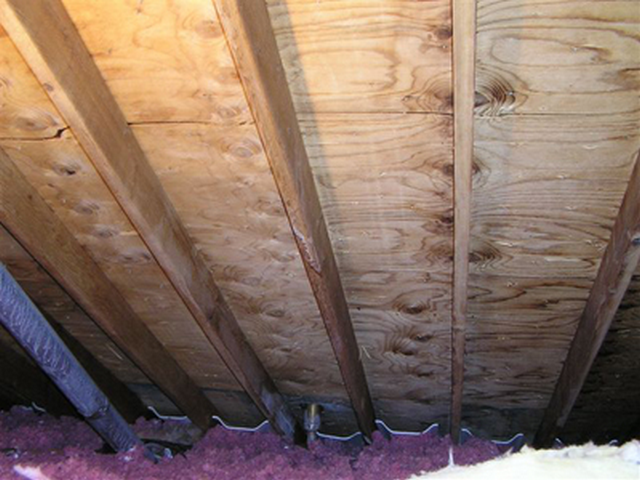
Why Does Mold Grow In My Attic?
Mold B Gone are mold inspection, testing, detection, and removal specialists. We have been serving the Atlanta, Georgia area since 2009 and back all of our work with a guarantee.
We encounter mold in many areas of the home, including basements, main living areas, crawlspaces, and attics.
Often, we encounter mold in an attic and one of the questions we are always asked is:
Why do I have mold in my attic?
The purpose of this article is to explain why you have mold in your attic and what you can do to prevent attic mold!
Top 4 Reasons Mold Grows In Your Attic!
#1 A Leaking Roof
If you have a roof leak, you may see water on your floors and water stains on the ceiling. The good news, you know that you have a problem.
However, if you have a roof leak and it goes unnoticed leading to moisture accumulation in your attic, this will eventually lead to mold growth that you may not even know exists.
This is the reason it is important to inspect your attic several times each year, just to make sure that there is no moisture buildup.
- Check for discoloration of insulation and wood (e.g. rafters, sheathing, joists, attic side of fascia boards, etc.).
- Check roof valleys (i.e. where two roofs join at an angle), which are highly susceptible to roof leaks.
- Observe skylights, chimneys, attic windows and any portion of the attic/roof where dissimilar materials join each other (including flashings). These places are hotbeds for potential moisture intrusion.
- If you have a vapor barrier installed, check for condensation. Although this is not really a roof leak, it is nevertheless a sign of a moisture problem. And moisture problems lead to attic mold problems!
- Make sure there are no leaks coming from and around attic plumbing stacks.
The first step to addressing the moisture cause is to get your roof repaired, then call us to remove the mold.
#2 Missing Insulation or Improperly Installed Insulation
The quest to save money on heating and cooling bills motivates many Do-It-Yourselfer’s to install more insulation in their attics.
Unfortunately, if the wrong kind of insulation is chosen or if it is installed improperly, this can cause moisture from the lower levels of your home to rise and get trapped in the attic.
As we have written before, the primary cause of mold growth is moisture. Your attic is made of the food mold loves to feed on.
With respect to the type of insulation, if you are layering insulation on top of other insulation, make sure you do not use the kind that has paper or foil backing because it acts as a vapor barrier and can trap moisture in the insulation.
Before you decide to add more insulation to your attic, determine if you need more first. If you are unsure, contact a professional.
#3 Inadequate Attic Ventilation
One of the problems we have encountered in our projects is the fact that insulation is blocking the ventilation ducts that distribute air in the attic.
The lack of ventilation is another major cause of mold growth in your attic.
Air travels up to the attic meaning activities such as cooking, bathing, showering, etc will produce moisture that will makes it way up to the attic. If there is poor ventilation, the moisture gets trapped in the attic and can lead to mold problems.
Check your soffit vents and make sure they are free of insulation, bird nests, and other debris that could be blocking them and preventing proper air flow.
If you are unsure if the ventilation is ideal in your attic, contact a home inspector or give us a call so that we can take a look.
#4 Fans Vented Into The Attic
Mold will grow if there is moisture, food, and warmth.
Poor building practices occur when the dryer vents, plumbing vents, kitchen or bathroom fans are vented into the attic.
Dryer exhaust vents, kitchen exhaust fans and bathroom exhaust fans are designed to pump moisture out of your home. Make sure that they are vented to the outside of your home and not in the attic.
Plumbing stacks in the attic can also be a source of condensation, which can lead to attic mold growth. Plumbing stacks can also emit hazardous gases, so make sure that they too do not terminate inside the attic.
If any of your vents are routed into the attic, hire a reputable contractor to re-route the vents to the outside of your house.
Got Attic Mold Questions?
Once the cause of your attic moisture issues are identified, then the next step is to determine if you have a mold problem.
Mold is nature’s recycler and will grow and proliferate when moisture is present.
Condensation in an attic, heat and humidity from household activities (cooking, showering, etc.), and the fact that the attic provides an excellent food source for mold, provides the ideal conditions.
All mold needs to grow is 24 to 48 hours and as long as the proper conditions exist, it will continue to proliferate.
If you do find mold in your attic, DO NOT use bleach or try to kill the mold!
The first step is to contact Mold B Gone for a mold inspection and air quality test.
During the inspection, tape or swab samples of suspected mold may also be taken and sent to a micro-biology lab.
Once the type of mold and spore count is determined, we will provide with a scope of work on the best way to remediate the mold in your attic.
If you suspect that you may have mold in your attic or other areas of your home or business, call 678-697-6267 or send us an e-mail. We look forward to serving you! 🙂
What’s In My Attic

Whats In My Attic

by Eric Brown | Apr 14, 2017 | Beware Of Mold When Buying A Home, Health, Indoor Air Quality, Mold Facts, Mold Information, Mold Inspection, Mold Remediation, Mold Removal, Mold Removal Cost, Questions and Answers, Top 3 Reasons You Should Have a Mold Inspection Before Buying a Home, Toxic Mold
Are You Buying or Selling A Moldy Home?
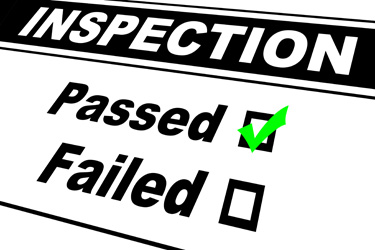
Are You Buying or Selling A Moldy Home?
It’s that time of year when the real estate market begins heating up in Atlanta, Georgia. More houses on the market to fill the need of anxious home buyers.
Many homes built since the 1970s are showing signs of mold growth because of the oil crisis that occurred. This event encouraged home builders to make the homes more air-tight, meaning there were less drafts that brought outdoor air into the home.
This trend to energy efficiency has led to mold problems because mold needs water and moisture to thrive and the air-tight environments trap moisture in.
The upside is energy efficiency has saved you costs on utilities.
The downside, indoor air quality has suffered because of mold growth! This has led to higher incidences of mold related illness and reduced home values because mold literally feeds on the home, impacting its structural integrity.
The major problem with mold is that it can be hidden. You could have mold in your home and not even know that you have it. Sometimes the only clue that you have mold is family members may be getting sick more often. The problem with hidden mold is the mold spores are not visible and because of modern day HVAC systems, the air borne spores will continue to be circulated in your home, thereby spreading the spores in every room of your home.
As a home seller or home buyer, you need to be aware of the potential concerns caused by mold. Consult with your Real Estate Agent and ask them to call Mold B Gone, 678-697-6267; for a limited time we are offering For a limited time, we are offering mold inspections.
If you are selling your home and know that you have mold, had past water leaks that have been fixed and/or experienced a major water event like a flood or sewage backup, you should disclose this information to the realtor listing your home to avoid potential litigation.
In a perfect world, the home seller will disclose this information, but let’s face it, we are not living in a perfect world.
When a home seller wants to sell their home, their objective is to list the property and get the highest price for their home. This is the reason they get the help of a realtor.
The only way home buyers can protect themselves is to take matters into their own hands and make sure that the home they are buying does not have mold or moisture concerns that could lead to mold.
Most home buyers rely on the expertise of their home inspector, but as this article explains, can you really just rely on the opinion of your home inspector? Are they experts in mold? Most home inspectors are not and they rely on the goodwill of referrals from realtors, so there could be an inherent conflict of interest.
This article explains why you should submit an offer to purchase, subject to a home inspection AND a mold inspection. It also reveals the top 3 reasons to have a mold inspection before buying a home.
What Is Mold?
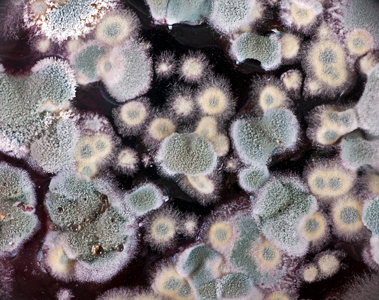
What Is Mold?
A fungus, some molds are visible, in various colors–black, white, green, gray–and will likely give off a smell.
Mold is nature’s recycler. It is everywhere because it has an important purpose in our eco-system: to breakdown and eat dead organic matter.
Mold needs three important ingredients to grow.
First, a food source, dead organic material like wood, paper, carpet, etc.
Second, the ideal temperature of 41 degrees fahrenheit up to 100 degrees fahrenheit.
Third, and most importantly, moisture. Without moisture, mold will not grow.
Why Is Mold A Problem?
Aside from the structural and health concerns (asthma and chronic sinusitis for example) that mold poses, the other major concern is that mold is often out of sight and difficult to see.
Common reasons and areas of the home that mold can be found include:
- Around leaking pipes, windows, or roofs. Water provides mold spores the moisture they need to grow.
- Basements or other areas of the home that have flooded and were not dried properly.
- Common with new construction is the practice of tightly sealing the building, which can trap moisture leading to mold growth.
- Poorly ventilated homes that does not enable outside air to circulate in the home.
Some other clues that there could be mold in the home include the following:
- Water stains on the walls and ceilings.
- Musty odors in areas of the home like the bathroom, kitchen, laundry room, and basement, where leaky pipes are commonly found.
- Standing water in the basement.
Be particularly careful if you are looking at purchasing a foreclosed home. These homes are susceptible to mold growth because cost saving measures by the banks usually means they will shut down the HVAC system, which is a major concern because it results in high humidity levels and ultimately mold growth.
Recently renovated homes are another concern because improperly trained contractors or the home seller could have found mold, but not addressed it properly.
A Brand New Home Could Have Mold!
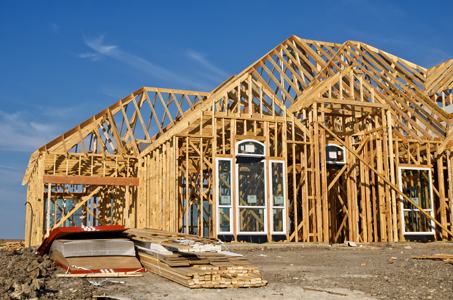
A Brand New Home Could Have Mold!
If you are buying a new home, you may think that mold will not be an issue either. New does not necessarily mean mold free for several reasons:
- The trend towards building energy efficient homes may save money on heating and cooling. The negative, however, is that by building homes so that they are air tight could result in a lack of proper ventilation, leading to mold growth.
- Simple construction errors like installing the vapor barrier when there is moisture present. This error will lead to mold growth because the moisture is trapped.
- The time of year the home was built could also be a factor. If the home was built when there was lots of rain and the foundation was not allowed to completely dry before installing the insulation and vapor barrier, then moisture could be trapped behind the walls.
- Cost saving construction measures is another factor. Home builders are using more Orient Strand Board (OSB) and less plywood and timber which provided some resistance to mold because these materials are semi-porous. In contrast, OSB and particle board are porous and susceptible to mold growth.
Top 3 Reasons To Have a Mold Inspection Before Buying a Home
Aside from the peace of mind that mold inspection offers, here are the top three reasons why you should consider a mold inspection when you buy a home:
- Mold Remediation Can Be Costly!
- Real Estate Agents Are Not Mold Experts!
- Home Inspectors Are Not Mold Experts!
#1 Mold Remediation Can Be Costly!

#1 Mold Remediation Can Be Costly!
As stated in an earlier article, the cost of mold remediation will depend on three key factors:
1. How much of the area is infected with mold?
2. What kind of materials are infected?
3. How easy is it to access the mold?
On average, the typical household mold removal project will range from $2,000 to $6,000, but can be as high as $30,000 or more depending on the extent of contamination.
Considering the potential cost of mold removal, you are much better off finding out if there is a potential mold problem before purchasing the home. A mold inspection will provide you with the data you require to make an informed decision.
Best case scenario, no mold is found. Worst case scenario, mold is found, but then if you still have your heart set on the home, at least you now have some negotiating power to bring down the price so the home can be properly remediated before you move in.
#2 Real Estate Agents Are Not Mold Experts!

#2 Real Estate Agents Are Not Mold Experts!
The goal of every real estate professional is to list and sell homes. They will only make their commission when the property sells, so they have significant motivation to do what it takes to facilitate the sale. Their end goal is pretty defined: sell the home and collect the commission.
In addition, real estate agents are sales and marketing professionals, they are not construction experts and likely know very little about mold, where it could be found, and why it is a problem.
When listing a home, the agent is relying on the honesty and integrity of the seller who fills in a property disclosure form. If the seller fails to disclose a mold problem that has not been fixed and is trying to hide the mold problem by painting over it or trying to hide it, how is the agent going to know. How will you know?
Buyers should pay close attention to the property disclosure form because it could provide you with clues of potential moisture problems that could cause mold. Some clues include YES answers to these types of questions:
- Is the property in a flood hazard area or an inland wetlands area?
- Does the home have basement water, seepage, or dampness issues?
- Has the home had roof leaks?
- Does the home have any rot and water damage problems?
- Does the home have any water drainage problems?
- Does the home have any sump pump problems?
#3 Home Inspectors Are Not Mold Experts!
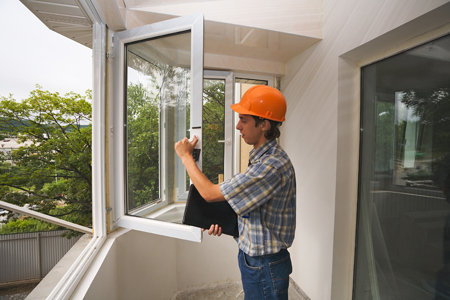
#3 Home Inspectors Are Not Mold Experts!
Mold sickness is considered a hidden epidemic for two key reasons. First, most physicians are not trained to identify or treat mold illness. Second, most homes have mold, but the owners do not realize they have mold because it is hidden.
Since some people get sick from mold and other’s do not, a family could have been living in a moldy home and never experienced any major health concerns. In short, a seller of a home could have mold and not know because mold can be hidden underneath carpet, a new paint job, baseboards, behind walls, above ceiling, etc.
Taking this into consideration, when you hire a home inspector, their primary concern is not to identify if the home has mold. Rather, they are inspecting the overall structural integrity of the home, the roof, wiring, bathrooms, plumbing, etc.
A home inspector may point out water stains or moisture concerns in areas of the home, advise you that your basement has an odor, identify water seepage or a leaky roof, but they will not tell you if you have mold, what type of mold you have, and how extensive the mold problem is.
As a final note, like many business owners, home inspectors rely on referrals. Not surprisingly, one of the biggest sources of referrals tends to be real estate agents, whose primary objective is to sell property. Mold concerns present challenges to home sellers and their agents. Could there be a potential conflict of interest?
Mold Inspections Are Important!
The process of buying a home is an exciting process. You have big plans for your new home! You are looking forward to the future in your dream home to raise your family.
But in all the excitement, many home buyers forget about the future problems that mold and past moisture issues could have caused. This fact is ignored because many home buyers think a home inspection is a enough to protect them from future and costly repair problems. This is the #1 mistake home buyers make; home inspectors are not mold experts!
The worst case scenario is you move your family and all your possessions into your new home and eventually discover mold. Now what? You can ignore the problem which could cause future health and structural concerns for your property or you make the financial decision to deal with your mold problem.
Both options can be costly. Ignoring the problem will reduce your property value as the mold eats away at your home, not to mention the potential health issues. Addressing the mold concern can also be costly because proper remediation needs to be done by professionals.
Likely, the last concern you have when you are purchasing a home is the potential problems that mold could cause. Once you find your dream home, you want to submit your offer and close the deal.
However, I caution against being too hasty. In addition to hiring a reputable home inspector, seriously consider the services of a mold inspector.
Mold inspectors are trained to not only identify the moisture issue causing the mold but will also provide you with information on what type of mold is growing in your home and how extensive the problem is.
As mentioned earlier, the best case scenario is that no mold is found in your home.
However, if the mold inspector does find a mold problem it is better to be aware of the problem so that you can adjust your offer, subject to mold removal by the seller along with proper clearance letters. If the seller does not want to cover the cost of the removal, then at least you can factor in the cost of the mold removal into the purchase price.
Bottom line, it is better to be safe and informed, then sorry. The relative cost of a mold inspection is minor compared to the overall investment into the home and the potential costly headaches you will face if you have to pay for mold removal in the future.
As mentioned earlier in this article, consult with your Real Estate Agent and ask them to call Mold B Gone, 678-697-6267; For a limited time, we are offering mold inspections.
Got Mold Questions?
We are mold inspection, detection, and removal experts. Call us, 678-697-6267, or contact us via e-mail. We look forward to serving you! 🙂

by Eric Brown | Apr 7, 2017 | Health, Indoor Air Quality, Killing Mold, Mold Information, Mold Inspection, Mold Remediation, Mold Removal, Questions and Answers, Toxic Mold
Essential Information You Should Know About Professional Mold Inspectors!

Essential Information You Should Know About Professional Mold Inspectors!
Mold B Gone has been serving residents in the Atlanta, Georgia area since 2009. We are experts at iaq testing, crawl space encapsulation, mold inspections and mold removal.
In a previous article we explained how you can determine if you have mold and what you should and should not do if you discover mold.
One of the key recommendations was to call a professional to do a thorough inspection.
The purpose of this article is to explain what the inspector does when they visit your home or business.
Mold Inspectors Have Two Key Goals!
The primary goal of a mold inspector is to first determine what is causing the mold. That is, they want to figure out what the source of moisture is that is causing the mold.
The second goal is to determine the extent of contamination and what type of mold is present so that a proper removal and remediation plan can be put into place.
Like a detective looking for clues, during the mold inspection, the inspector will gather information about the property by taking four actions:
- Looking For Visual Clues
- Asking Questions
- Measuring Moisture Levels
- Sampling Suspect Mold
#1 Looking For Visual Clues
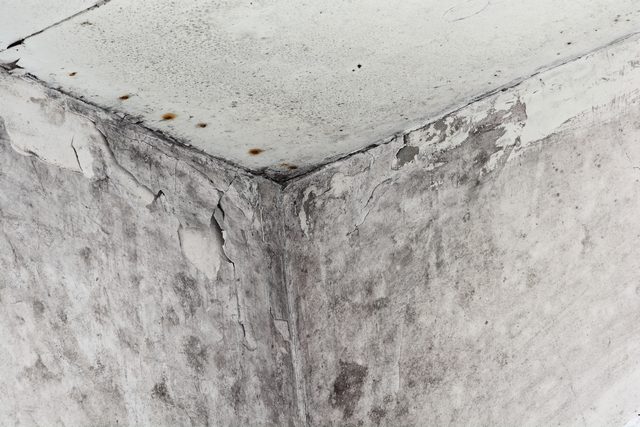
#1 Visual Clues
Prior to entering the home or building, the inspector will examine the landscaping and determine if seepage could be a potential problem by examining the drainage system to determine if water flows away or towards the property.
The inspector will also look at the facia, eaves, and drain spouts to determine if there are any potential areas where water could be entering the property.
The whole purpose is to rule out any external sources of moisture intrusion.
Once this is complete, the inspector will look for visual clues of moisture inside of the property, including water stains, under sinks, behind appliances, behind baseboards, window condensation, etc.
#2 Asking Questions

#2 Asking Questions
The inspector will likely ask many questions to gather information about the building history, health of occupants, and potential moisture events that could be causing mold.
- Does anyone have any negative health affects when in the building yet feel better when not in the building? Important to know because if occupants are suffering ill health, this could indicate that there are indoor air quality issues potentially caused by mold.
- What year was the property built? This question gives the inspector some idea of how old the the structure is and potential aging concerns that could lead to moisture issues.
- How long have you owned and or lived, worked in or been renting the house or building? If you have experienced ill health, the length of time in the building could give clues as to the extent of the air quality issues.
- Does the house have a sump pit and pump? Many homes have sump pits and pumps to prevent flooding, but it is important that they are functioning properly.
- Ever had any leaks such as dishwashers, water heaters etc? If the answer is yes, then this could provide further clues as to where the potential moisture issues originated from that caused the mold issues.
- Previous floods or sewer backups such as toilet overflows? Again, if the answer is yes, strong clue of the potential cause of mold concerns.
- Do the windows leak or sweat? If the windows leak or sweat this could indicate that there are moisture issues in the home causing mold.
- Are the windows original? If the windows were recently replaced and not installed properly, this could cause moisture issues leading to mold.
- What year was the roof last shingled? One of the most common causes of moisture in homes, is leaky roofs. If the home is older and the roof has not been inspected, this could be a potential source of the mold problem.
- Is the furnace high efficiency and is there a HRV heat recovery ventilation system in place? The HVAC system of the home is the lungs of the home. If it is not operating properly, the air quality could be poor.
- Do the bathrooms have exhaust fans? Bathrooms create significant amounts of moisture in the home. If there are no exhaust fans, this could be a significant source of moisture potentially leading to mold issues.
- Are the fans vented to the outside environment or just into the attic? Fans vented into attics is a common construction flaw that leads to mold problems in properties.
- Is the dryer vented outside? Dryers should be vented outside, if not, this will create significant moisture issues.
- Have any upgrades to the exterior been done within the past ten years? Important question because the potential moisture problems could have been caused by poor construction practices during the upgrade.
- Major upgrades to the interior? This is another important question because sometimes during interior renovations mold is discovered but not properly cleaned up and can result in cross-contamination throughout the home.
Answers to these questions will help the inspector assess how and where the potential moisture concerns are originating from. It is important to understand that any mold remediation that occurs should only begin once the underlying moisture problems are fixed.
#3 Measuring Moisture Levels
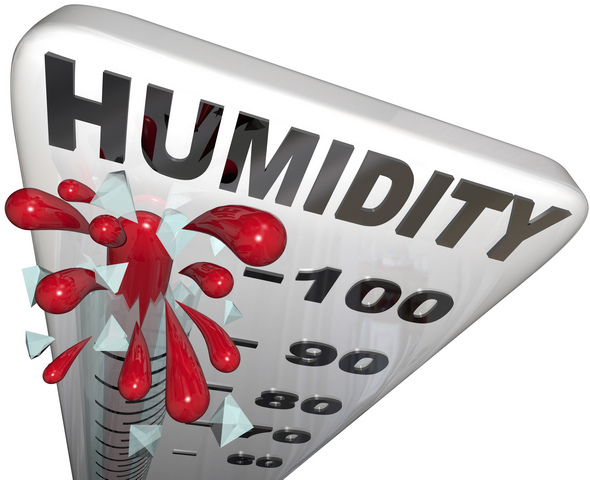
#3 Measuring Moisture Levels
High humidity is one of the strongest indications that there are moisture problems in the property. During a mold inspection the inspector will note down the relative humidity and temperature of each room. If there are specific rooms that have higher levels of relative humidity, this could be a clue that there is a mold problem in the room.
#4 Sampling Suspect Mold
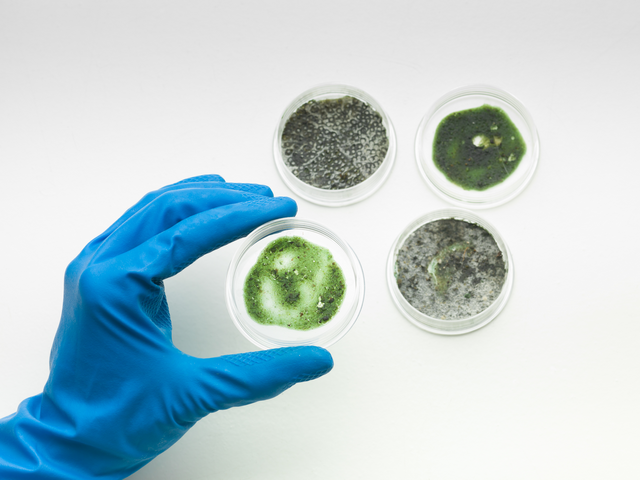
#4 Sampling Suspect Mold
The last step is to try to figure out what type of mold is present. The sampling strategy of the inspector could involve taking actual swab or tape samples. Some inspectors may also recommend that an air quality test be done as well to measure the spore count in the home compared to the outside air. The samples from such tests should be sent to an independent third party lab for examination.
As a final note, it should be noted that a home could have moisture issues that are not found through a visual inspection. This is one of the challenges that most mold inspectors face because mold can be hidden and sources of moisture can be hidden as well. A perfect example is if the property has leaky pipes, creating moisture and mold. If, during the questioning process, the inspector suspects that the problem could be leaky pipes, they may recommend that a thermal imaging test be done to examine the hot and cold spots in the home which will help pinpoint the area where the leak is taking place.
A credible mold inspector will take a proper amount of time to determine if there are mold concerns and then recommend a proper course of action. If you have your home inspected and it takes less than 15 minutes and you are told it will cost tens of thousands of dollars to fix, then definitely get a second opinion.
Got Mold Inspection Questions?
Questions? We are here to help and guarantee our services. Call 678-697-6267 or send us an e-mail.
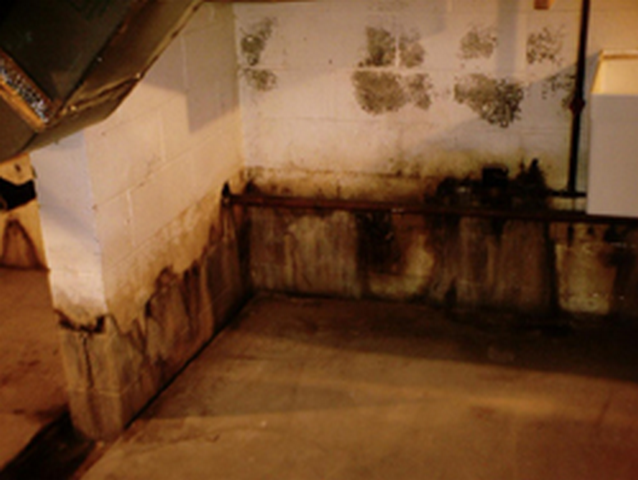
by Eric Brown | Mar 24, 2017 | Health, Mold Facts, Mold Information, Mold Inspection, Mold Remediation, Mold Removal, Questions and Answers
Top Ten Mold Facts

Top Ten Mold Facts
Mold Fact 1: The Key Ingredient Mold Needs To Thrive Is Moisture
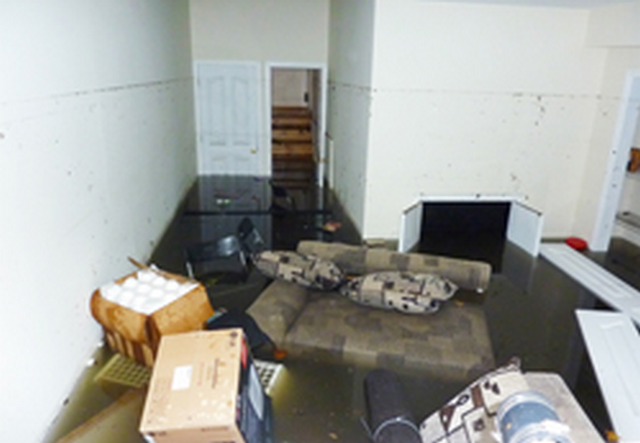
Mold Fact 1: The Key Ingredient Mold Needs To Thrive Is Moisture
Mold has a purpose in our eco-system, ie. to consume dead organic material. It poses health hazards when it begins growing in indoor environments. Mold gets indoors through open doorways, windows, heating, ventilation and air conditioning systems. Spores in the air outside also attach themselves to clothing, animals, shoes, bags and more!
Commons sources of moisture include the following: flooding; backed-up sewers; leaky roofs and/or water leaks; humidifier which is not regularly cleaned and disinfected; damp basements or crawl spaces; house plants and their debris; steam from cooking and showers; wet clothes hung to dry indoors; inadequate air exchange; excessive humidity; and condensation, which is especially a problem during the winter, on poorly insulated surfaces.
To prevent mold growth, control moisture and maintain an interior humidity level of between 30 to 40%.
Mold Fact 2: Buildings and Homes Provide the Perfect Food For Mold
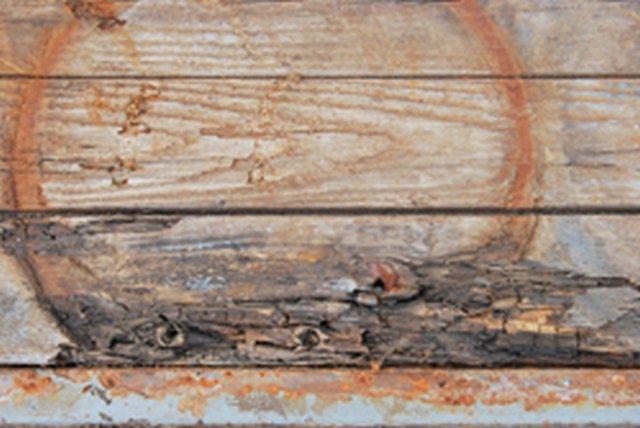
Mold Fact 2: Buildings and Homes Provide the Perfect Food For Mold
Since mold’s purpose is to break down and consume dead organic material, modern day buildings and homes provide an ample food source because they are constructed using materials that mold loves to feed on: wood & wood products; paper and other paper products like cardboard and wallpaper; leather; fabric and upholstery; grout; painted walls; cement; plaster (drywall); ceiling tiles; insulation materials; and carpet.
Mold Fact 3: Mold Needs Less Than 2 Days To Begin Growing

Mold Fact 3: Mold Needs Less Than 2 Days To Begin Growing
Mold requires three key ingredients to grow:
1. Food as documented in mold fact 2;
2. The ideal temperature of 5 degrees to 38 degrees; and
3. Moisture is the key ingredient.
In the presence of moisture, the ideal temperature, and ample food, mold will begin growing within 24 to 48 hours.
Mold Fact 4: There Are 3 Distinct Types of Mold
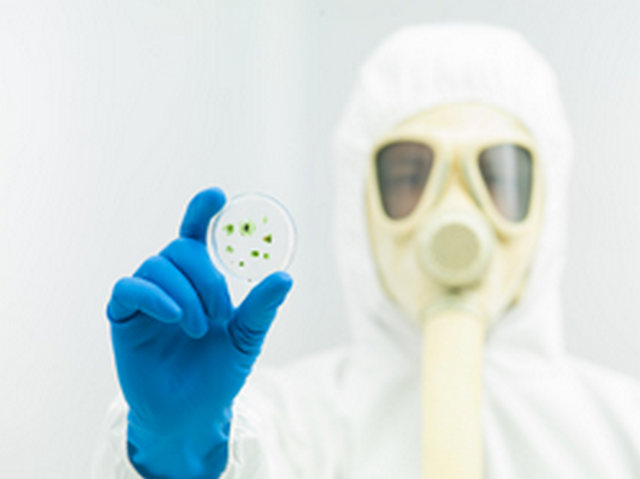
Mold Fact 4: There Are 3 Distinct Types of Mold
Of the 100,000 types of mold that have been identified, the three most common types of mold are:
1. Allergenic Molds are not usually life-threatening but are most problematic for individuals with allergies or asthma. The challenge is figuring out what mold is triggering the reaction. Children are particularly susceptible to mold allergies.
2. Pathogenic Molds produce an infection of particular concern if your immune system is weak or compromised. This type of mold can cause hypersensitivity pneumonitis, an acute response resembling bacterial pneumonia. An example is Aspergillus fumigatus, which can grow in the lungs of immune-compromised individuals.
3. Toxigenic Molds produce mycotoxins that will make anyone sick. Possible reactions include immune suppression and cancer. Mycotoxins are chemical toxins present within or on the surface of the mold spore, which can be inhaled, ingested, or touched. An example of this is aflatoxin, one of the most potent carcinogens known to mankind. Aflatoxin grows on peanuts and grains, and on some other foods.
Mold Fact 5: There Are 5 Distinct Species of Mold
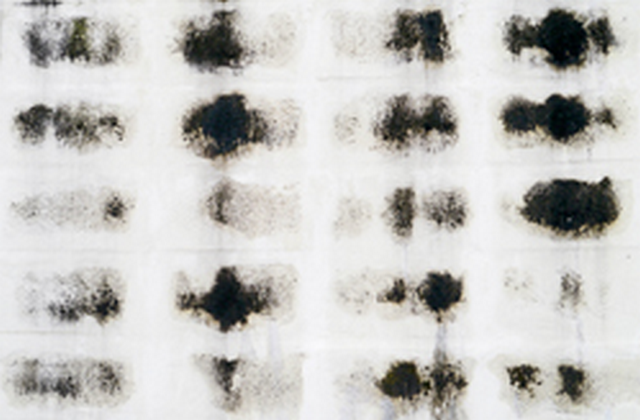
Mold Fact 5: There Are 5 Distinct Species of Mold
The five most prevalent species of mold are:
1. Alternaria mold is commonly found in your nose, mouth and upper respiratory tract and can cause allergic responses.
2. Aspergillus mold is usually found in warm, extremely damp climates, and a common occupant of house dust. This mold produces mycotoxins which is a poisonous chemical compound. This mold variety can cause lung infections including aspergillosis.
3. Cladosporium mold is a very common outdoor fungus that can find its way indoors and grow on textiles, wood and other damp, porous materials. This mold triggers hay fever and asthma symptoms.
4. Penicillium mold is a very common species found on wallpaper, decaying fabrics, carpet, and fiberglass duct insulation. It is known for causing allergies and asthma. Some species produce mycotoxins, one being the common antibiotic penicillin.
5. Stachybotrys mold is extremely toxic “black mold” that produces mycotoxins that can cause serious breathing difficulties and bleeding of the lungs. This mold can be found on wood or paper.
Mold Fact 6: Most Mold Is Hidden
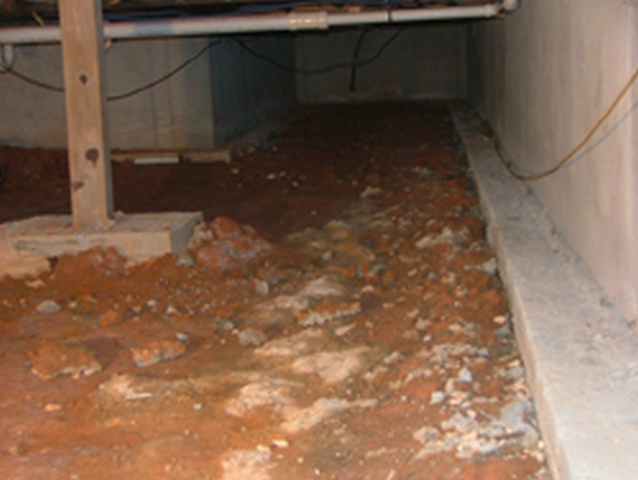
Mold Fact 6: Most Mold Is Hidden
Many people don’t think they have mold because they can not see it. That is a problem because common hiding places for mold include the inside of drywall, behind improperly installed showers, in leaking roofs, and in crawl spaces with poor circulation.
Mold can be detected through smell, visual clues, and knowledge of the building history, ie. was there a flood or indoor leak.
Mold detection requires trained professionals because they have the tools and knowledge to know what to look for.
The first priority of the mold inspector / indoor air quality specialist is to determine if mold is an issue. They will determine this with an interview to learn more about the building history, take moisture readings to determine if there is a source of moisture required for mold growth, and conduct visual inspections.
Other recommendation of the inspector may also include thermal imaging if an identifiable moisture source is not present, but mold is detected. The inspector may also take samples of suspect mold with a a swab test, tape sample, or air quality test. These tests will determine the type of mold and spore count present. The goal of the mold inspection is to determine the extent of the mold problem so recommendations can be made to bring the fungal ecology to a healthy level.
If it is verified that mold is present, then the source of the moisture problem must first be fixed before removing the mold.
Mold Fact 7: The World Health Organization (WHO) Acknowledges That Mold Is A Health Hazard

Mold Fact 7: The World Health Organization (WHO) Acknowledges That Mold Is A Health Hazard
In 2009, The WHO published, a 228 page document: WHO Guidelines for Indoor Air Quality: Dampness and Mould and concluded:
When sufficient moisture is available, hundreds of species of bacteria and fungi – particularly mould – pollute indoor air. The most important effects of exposure to these pollutants are the increased prevalence of respiratory symptoms, allergies, and asthma, as well as disturbance of the immune system. Preventing (or minimizing) persistent dampness and microbial growth on interior surfaces and building structures is the most important means of avoiding harmful effects on health.
Mold Fact 8: 1 in 4 People Have A Genetic Predisposition To Mold Illness

Mold Fact 8: 1 in 4 People Have A Genetic Predisposition To Mold Illness
Dr. Richie Shoemaker, a physician and expert in the field of biotoxin-related illness and author of the book Surviving Mold, believes that 25% of the population has a genetic pre-disposition to the mold illness, Chronic Inflammatory Response Syndrome (CIRS), also known as Sick Building Syndrome (SBS):
Genes made them prime targets for an assault by their own innate immune systems….exposure to the interior environment of a Water-Damaged Building (WDB), [causes] an innate immune response that is going haywire.
Individuals exposed to the toxins in a water damaged building suffer from chronic illness because their bodies are trying to eliminate the foreign substances that stay in the body resulting in chronic inflammation and multiple symptoms. It is difficult to diagnose CIRS because there are 37 symptoms: fatigue; weakness; aches; muscle cramps; unusual pain; ice pick pain; headache; light sensitivity; red eyes; blurred vision; tearing; sinus problems; cough; shortness of breath; abdominal pain; diarrhea; joint pain; morning stiffness; memory issues; focus/concentration issues; word recollection issues; decreased learning of new knowledge; confusion; disorientation; skin sensitivity; mood swings; appetite swings; sweats (especially night sweats); temperature regulation or dysregulation problems; excessive thirst; increased urination; static shocks; numbness; tingling; vertigo; metallic taste; and tremors.
Because of the large number of symptoms and different combinations that a patient can have, CIRS is difficult to diagnose.
Mold Fact 9: Most Doctors Do Not Have Training To Identify Mold Illness

Mold Fact 9: Most Doctors Do Not Have Training To Identify Mold Illness
According to the producers of the MOLDY Documentary released earlier this year, most Physicians do not understand or have the knowledge to properly diagnose patients with mold sickness:
Possibly every doctor in the United States is treating mold illness, and they just don’t realize it. (Dr. Scott McMahon, MD)
Wonder Makers Environmental, a company based in Michigan, launched a website, www.moldsensitized.com to educate consumers, contractors, and health professionals on the health concerns caused by mold. Since launching the site, several mold sensitized individuals have been interviewed. Five key lessons are gained from these interviews:
- There is a lack of appreciation among medical professionals of health impact of mold.
- Mold sickness symptoms are broad, leading to multiple mis-dagnosis of patients by several different physicians.
- Mold sensitized individuals seek help from multiple medical practitioners and still do not get healthy.
- Over time, the patient discovers that mold is the cause of the sickness.
- Mold sensitized individuals are often forced to seek alternative shelters because traditional remediation approaches are not adequate.
Mold Fact 10: Failure To Fix A Mold Problem Will Reduce The Value Of Your Property

Mold Fact 10: Failure To Fix A Mold Problem Will Reduce The Value Of Your Property
Mold is a serious issue. If you leave it untreated, it continues to grow. It leads to respiratory illness and it rots the wood, leaving the property valueless. (Ian Schlake of Respond and Rebuild)
In addition to the health concerns caused by mold, it is important to understand that mold is like a parasite or cancer and will continue to feed on your home until it is removed and the conditions causing the mold growth are fixed. Failure to fix the underlying causes of the mold and effectively removing the mold will lead to reduced property values caused by structural damage.
Got Mold Questions?
Questions about mold? Call us, 678-697-6267, or send us an e-mail. We look forward to serving you!
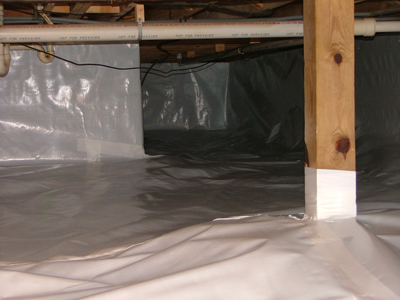
by Eric Brown | Mar 10, 2017 | Crawl Space Vapor Barrier, Crawlspace Mold, Health, Indoor Air Quality, Mold Facts, Mold Information, Mold Inspection, Mold Remediation, Mold Removal, Questions and Answers
Why Do Crawl Spaces Need A Vapor Barrier?

Why Do Crawl Spaces Need A Vapor Barrier?
Mold B Gone are crawl space mold removal and crawl space encapsulation professionals. We have been serving the Atlanta metropolitan area since 2009, performing 1000s of jobs.
One of the most common problems we encounter is mold in crawl spaces. The purpose of this article is two fold.
First, we will answer the most common questions asked about crawl spaces.
Second, we will explain why crawl space encapsulation is so important by listing and explaining the top 5 reasons your crawl space needs a vapor barrier.
Frequently Asked Questions About Crawl Spaces!

Frequently Asked Questions About Crawl Spaces!
If you look into your crawl space, you may notice standing water, moldy insulation, or a bad smell. Listed below are the top questions we encounter about crawl spaces.
1. Why Does My Crawl Space Get Wet?
Your crawl space could be wet for several reasons:
- Cracks in the foundation or walls allow water and moisture to enter your crawl space.
- Improper ventilation can allow moisture in.
- Poor drainage systems also allow moisture and water in.
- Poor maintenance and not sealing the dirt floor is another common reason your crawl space is wet or damp.
2. Why Should I Be Concerned About A Wet Crawl Space?
There are two key problems caused by wet or damp crawl spaces.
First, if your crawl space has standing water or is damp, this will encourage the growth of mold and mildew.
Second, the excess moisture and mold will also cause wood rot and structural deterioration.
3. Will Vents Keep My Crawl Space Dry?
No!
Unfortunately, vents will not keep your crawl space dry.
Moisture and humidity can still accumulate in your crawl space, which in turn will lead to mold and wood rot.
In addition, often times the air flow is impeded when the vents get blocked by plants or other object outside the vent. When this occurs, water that collects around the home or drips down the exterior walls can enter your crawl space creating moisture problems.
4. Can The Air In My Crawl Space Enter My Home?
Yes!
A large percentage of your home’s air, 40% or more, comes from your crawl space.
Air in your crawl space seeps up into your home through the floors, and around heating and air ducts.
The air quality of your crawl space can have a negative impact on your home if there is excess moisture and mold.
Common health issues caused by poor crawl space air include headaches, fevers, and respiratory problems.
5. What Should I Do To Keep My Crawl Space Dry?
If your crawl space is wet, the following steps must be taken.
- All moisture and water must be eliminated.
- Wet insulation and standing water needs to be removed.
- The ventilation system must be inspected to ensure it is working efficiently. If not, it needs to be fixed.
- The next step is to figure out why you have a moisture problem in the crawl space by finding and fixing any cracks, holes, leaks, or damage to the walls, ceiling, and floors.
- The final step is to seal up the damaged areas and install fresh insulation, and most importantly install vapor barrier, which is explained in greater detail below.
Now that you have answers to the most common questions we encounter about crawl spaces, the remainder of this article will explain why the installation of vapor barrier is so important.
Five Reasons Your Crawl Space Needs A Vapor Barrier!
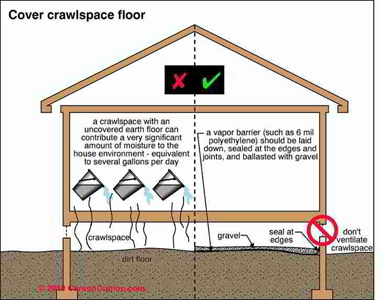
Five Reasons Your Crawl Space Needs A Vapor Barrier!
#1: Keep Moisture in the Soil!
According to the EPA, a vapor barrier will keep your home drier and is especially recommended for older homes to control dampness. In Atlanta, where humidity is a big issue, your crawl space likely has moisture and damp issues and a vapor barrier will help keep the moisture down because it will prevent moisture from escaping from the soil.
Installed correctly and spread uniformly across the soil and the the walls of your crawl space, the vapor barrier creates a barrier between moisture and your home.
#2: Prevent Ductwork from Rusting and Corroding
Most homes with crawl spaces have ductwork running underneath their home, and many have their HVAC system installed under the house as well.
It is important to keep moisture at a minimum to prevent metal from rusting and corroding.
#3: Prevent Wiring Hazards
Many crawl spaces also have wiring. Water and electricity do not mix well. Accumulation of excess moisture is a potential fire hazard and could create an unsafe environment for anyone that enters the crawl space.
#4: Keep Your Home Dry
Since excess moisture in your crawl space can enter your home through the floor boards, keeping the moisture to a minimum will also help maintain moisture levels in your home.
In addition to a damp free home, a vapor barrier will also reduce your utility bills because your air conditioner will operate more efficiently.
The risk of excess dampness and moisture in your home is mold. If your crawl space is wet and that moisture enters your home, you will not only have mold problems in the crawl space but your home.
As mentioned earlier, mold can cause health problems; moisture control is imperative in both your home and crawl space.
#5: Keep Your Crawl Space Clean
Your crawl space is an area of your home that you can potentially use for storage. In order to ensure that your crawl space is a safe and clean environment, a vapor barrier will reduce moisture and also keep the area clean and less inhabitable for rodents and insects.
If you plan to use your crawl space for other uses, such as storage, we recommend that you use a stronger and thicker barrier.
The most important role that a vapor barrier plays is keeping the moisture in the soil. At the same time, it will help maintain a cleaner and safer environment for you, should you choose to use it for storage or other uses.
Got Crawl Space Questions?
If you have questions about your crawl space, please give us a call, 678-697-6267 or send us an e-mail. We look forward to serving you! 🙂
Top 5 Ways Your Crawl Space Affects Your Home Infographic










